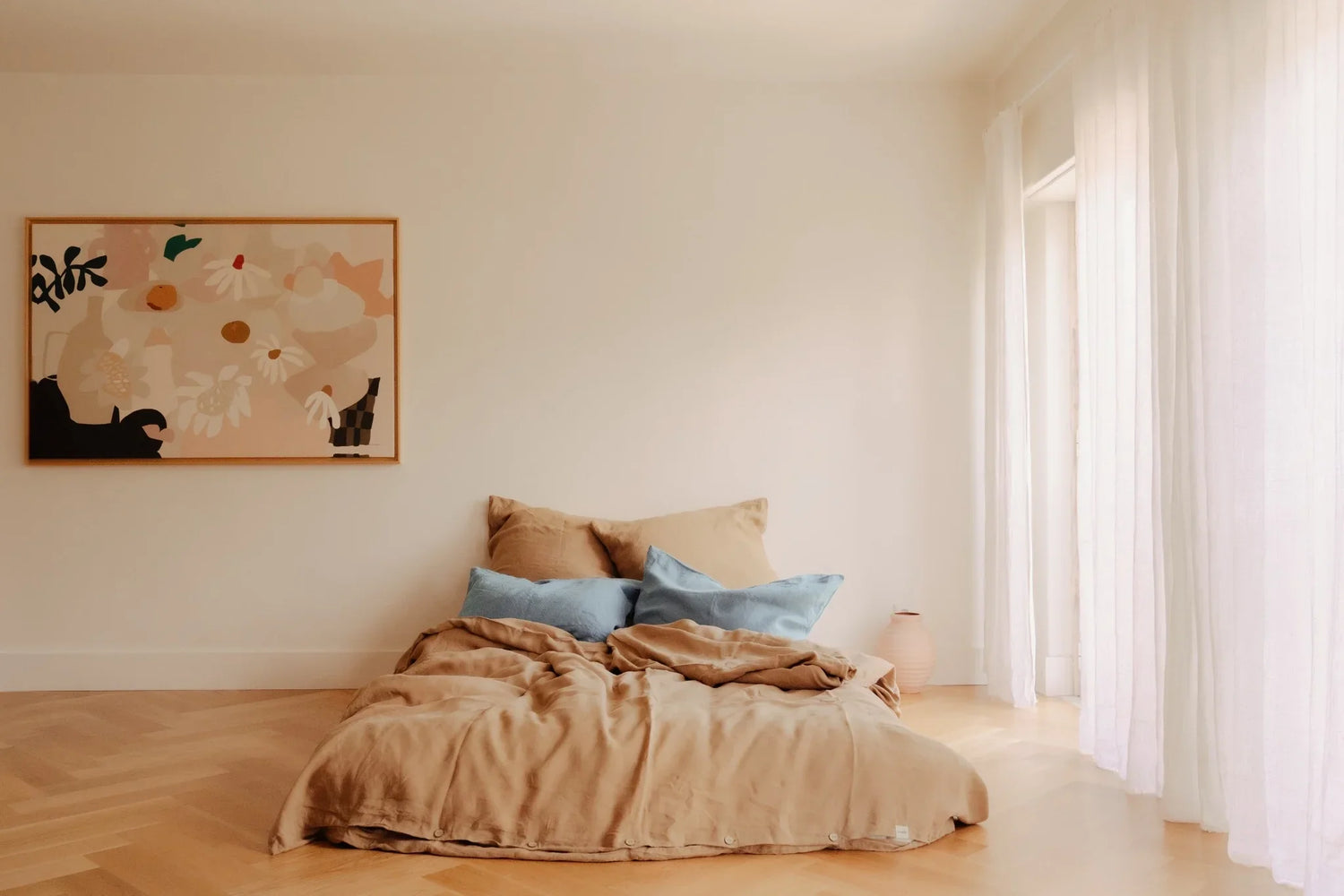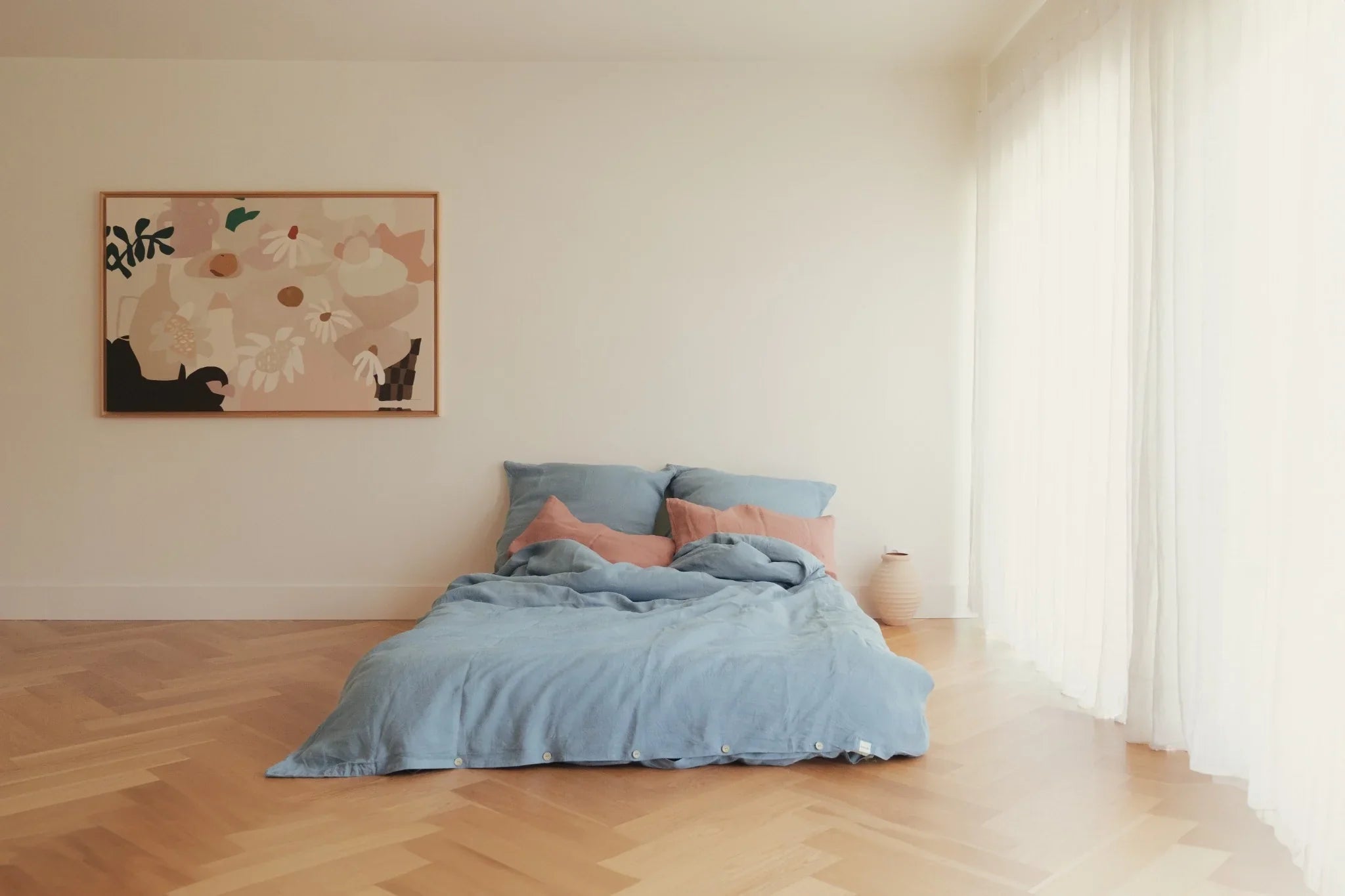We spend about a third of our lives sleeping. Yet we often pay too little attention to the room where this valuable regeneration takes place. Yet the climate in the bedroom has a direct impact on our sleep quality: temperature, humidity, materials, and atmosphere all directly affect our well-being.
If you often feel unrested in the morning even though you've gotten "enough" sleep, it could be due to an unbalanced sleeping environment. Here's how you can improve your bedroom climate – and why linen plays a crucial role.
The optimal temperature for healthy sleep
Our bodies need a cooler ambient temperature to fall asleep. Ideally, around 16 to 18 degrees Celsius is optimal. If it's too warm, falling asleep becomes more difficult and sleep becomes more restless. Too much cold can also make it difficult to fall asleep, especially if your bedding doesn't respond appropriately.
Linen helps the body regulate its natural temperature. It has a pleasantly cooling effect in summer and warming effect in winter because it quickly absorbs and releases moisture without feeling clammy. This makes linen the perfect choice for every season.
Breathable materials: Linen has a balancing effect
Many duvet covers made of synthetic or heavily treated fabrics barely allow for air circulation. The result: trapped heat, sweat, and restless sleep. Linen, on the other hand, is naturally breathable. It supports air circulation and allows your skin to breathe freely. At the same time, it has antibacterial properties and is particularly suitable for sensitive skin.
This breathable property of linen not only improves the microclimate in the bed, but also the overall feel of the room. You wake up feeling more refreshed because your body can regenerate better during the night.
Consciously regulate humidity and room air
Dry, heated air or stagnant, humid summer air: Both can severely impair sleep quality. A good solution is to ventilate regularly, perhaps even sleeping with the window slightly open. Plants such as snake plant or ivy can also improve air quality.
Linen supports this healthy indoor climate: It absorbs humidity without feeling damp and releases it slowly. This creates a balanced humidity level in the bed – without any technology.
Light, colors and silence: The fine adjustment screws
In addition to air and temperature, light and sound also play a role. Darkened windows, calm colors like sand, sage, or sky blue, and minimalist furnishings support the feeling of tranquility. Materials like linen reinforce this impression visually and tactilely: They appear natural, unfussy, and pleasantly familiar.
Textile elements such as curtains or rugs made of natural fibers also improve acoustics and dampen noise, creating a holistic space that invites relaxation.
Linen as a posture: Sleeping naturally means living consciously
Linen not only stands for quality and style, but also for a conscious lifestyle. Choosing linen means opting for longevity, natural processes, and against excess. This is especially noticeable in the bedroom: Here, it's not how much you own that counts, but how comforting it feels.
A well-thought-out bedroom environment isn't about perfection, but rather about attention. Linen helps you live this attention – quietly but effectively.
Conclusion: The path to better sleep begins with the details
Good sleep isn't something you can take for granted, but rather the result of many small decisions. Choosing the right bedding, a well-ventilated room, natural colors, and a minimalist design: all of these things work together.
With linen, you create a natural foundation for precisely this balance. And thus for what is often neglected in everyday life: true relaxation, deep breathing, and the feeling of finding yourself.









Leave a comment
All comments are moderated before being published.
This site is protected by hCaptcha and the hCaptcha Privacy Policy and Terms of Service apply.